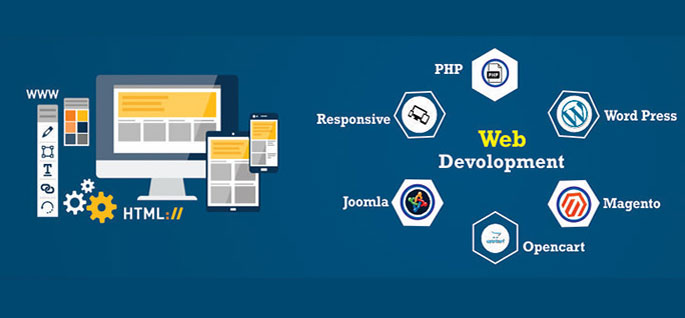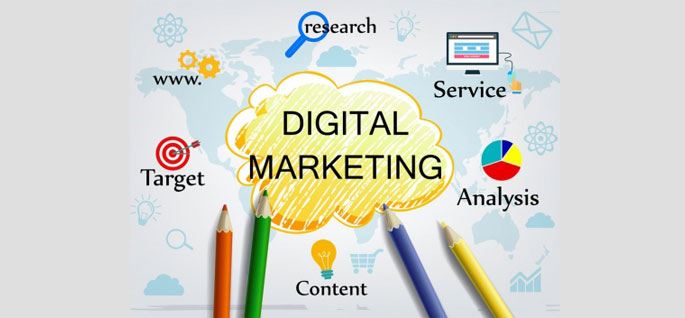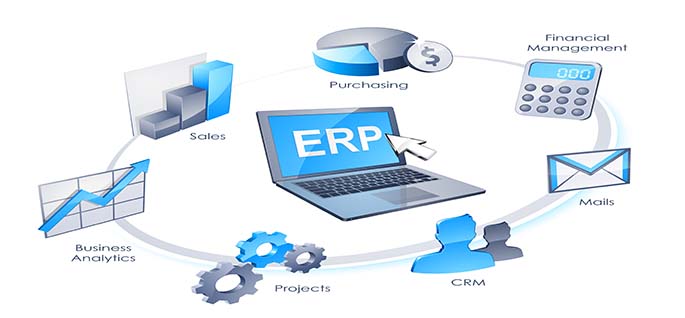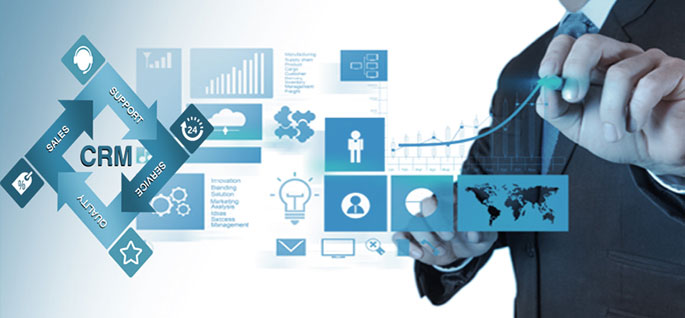
Cloud computing is part of almost every IT conversation, from strategic planning to tactical implementations. Organizations are mesmerized by the cloud’s promises of significantly improved business and IT agility and lower IT costs. All organizations now have a cloud strategy. The key question now is ‘are they executing their strategy to get most out of their cloud investments?
The better an organization is able to aim, deploy, and execute its cloud strategy, the faster they will achieve their business objectives. Unisys has illustrated this over a period of years, and throughout numerous clients, leveraging our suite of cloud solutions which help organizations:
- - Select applications and align cloud opportunities with business strategies
- - Secure workloads by giving them zero visibility
- - Manage IT environments with a single view
- - Speed that moves applications with minimal risk up to 60% faster. This is the speed you need to meet your customer and market demands
- - Security that isolates endpoint environments using communities of Interest thus protecting you from unknown threats
- - Cost savings through a single dashboard to manage infrastructure optimizing resources
- - Enterprise Broker Service
- - Private Cloud Services
- - CloudBuild Services
- - Choreographer
- - Cloud Advisory Services
Appsource Cloud Solutions delivers the speed, flexibility, and security your enterprise needs.

At the frontier of mobile applications development for iPhone, iPad and Android since the beginning. When you choose Appsource, you’re partnering with a team that has been designing and building powerful, feature-rich mobile apps with stunningly beautiful interfaces for years.
Building on our extensive work with Mac-exclusive technologies like Cocoa and Interface Builder as well as Android and Blackberry platforms, Sourcebits quickly became a global leader in the world of multi-touch, accelerometers, and mobile application design for iPhone, iPad and Android.
Both businesses and consumers demand innovative‚ out-of-the-box mobile applications that provide sophisticated user experiences. They expect feature-rich solutions that include technologies such as video, location awareness and mapping, data capture, real–time notifications, near field communication (NFC), data synchronization across platforms, and more. Add to that the diversity of devices and OS versions and developing for mobile quickly becomes a challenge.
We’re the mobile and wireless expert group at the Impetus Labs. We offer assistance and solutions no matter where you are in your mobile development lifecycle. We can provide
- - Anytime Anywhere mobility solutions
- - Architecture for the next-generation of mobile applications
- - Strategy and implementation
- - Test automation
- - Android customization
- - User experience design, evaluation, and support

Bring your web presence to life. Appsource has the experience and expertise to bring your web presence to life, from engaging, interactive web apps to gorgeous high-end sites.
Appsource is the most versatile website designing, website devlopment, and website management company in bangalore offering a host of bundled solutions e.g Web Portal Design and Development, Website Design and Development, E commerce Website Design and Development, Website Hosting, Windows Hosting, Linux Hosting, Domain Registration and much more to our clients.
Our strength has been a strong dedicated team of seasoned Web Designers and Developers who aim to deliver quality at all times. Based in the heart of Cosmo Mumbai we have been a boon to our clients in India and worldwide with the most cost effective tailor made E-Commerce website solutions to suit all budgets and sizes.
Appsource provides more than website design and development. Your business, web presence, and brand identity will be taken to the next level. Webcraft India will produce a custom website design and platform that will maintain the professional image that you’ve worked hard to build. Webcraft is a leading provider of web site design and development solutions in the Mumbai area.
Online shopping is a 250 billion dollar industry and is rapidly growing. The industry has grown 61% over the last year. Webcraft India has the knowledge, resources, and experience to produce a successful e-commerce solution for your business. Our expert web designers in Mumbai has helped businesses worldwide in launching a successful ecommerce website.
Appsource web apps are a seamless marriage of form and function that practically erase the distinction between desktop and browser-based applications. Whether you’re looking for a sexy new online shopping experience, a powerful new productivity app, or fully featured online photo and graphics editing software, Appsource’s Web and code gurus create incredibly rich user experiences for Web apps — optimized for both desktop and mobile.

Digital marketing today has become a vast arena which continues to expand rapidly, Formulate your digital marketing strategy now or risk getting left behind!
Company’s today have a large number of digital channels which can be used to have a dialogue and engage their consumer. The key differentiator of digital marketing is that it allows people/ consumers to be selective about what brands they choose to interact with.
Digital marketing today has become a vast arena which continues to expand rapidly. Companies need to formulate their digital marketing strategy carefully before jumping onto the next big trend that becomes hot.
- - SEARCH ENGINE OPTIMIZATION
- - SOCIAL MEDIA MARKETING
- - ONLINE REPUTATION MANAGEMENT
- - SEARCH ENGINE MARKETING
- - GOOGLE ADWORDS
- - DISPLAY MARKETING
- - GOOGLE ANALYTICS
- - EMAIL MARKETING
- - CONTENT WRITING
- - MOBILE MARKETING
- - AFFILIATE MARKETING
- - MEDIA BUYING & PLANNING

The Our ERP system is a sophisticated and robust accounting and operation managment system for small and midsized businesses. With Sage ERP system you can create a perfect, lasting fit for your business by implementing only the modules you need today and subsequently building out your financial and operational system over time as you grow by adding more Our modules and Options products. With the Our ERP system you can also enhance the productivity of your entire enterprise--beyond the back-office--with end-to-end solutions, such as CRM, Business Intelligence, Warehouse management that integrates seamlessly with Our accounting software.
Our ERP accommodates the unique requirements you have today, and it readily adapts to meet your changing needs. It has been found out that these qualities make all the difference for owners of small and midsized businesses--leaders who realize that the ability to streamline their processes can be a prerequisite to growth, and who are likewise concerned about what impact that growth will have on their investment in technology.
Our ERP accounting software offers the power, flexibility, and support you need to face today's challenges with confidence and welcome the business and technological changes that are sure to come with your success.
Our is scalable. With three Our editions to choose from i.e. Standard, Advance and Premium , you don't have to worry about outgrowing your ERP system in the future.
A modular structure and customizable screens and fields make it easy to tailor Our to your unique requirements.
Web, desktop, or both? The choice is yours with flexible deployment options.
A graphic interface that's consistent from screen to screen makes for easy data entry and reporting.
Our ERP is more than an accounting solution. Our integrates with an array of end-to-end solutions, such as CRM system; thereby enhancing the productivity and profitability of various businesses. A few other systems includes but not limited Manufacturing modules, Fixed Assets, specialized vertical solution modules like Grid Inventory system and Service Management systems.
Even if you don't know what multitiered or object-oriented mean, you'll feel the strength of Our ERP's architecture every time you take advantage of the system's amazing flexibility.

Appsource CRM provides expert CRM consulting and service to custom integrate the correct CRM system for your business and with it, your business can manage your sales with the ease of a well oiled machine.
Kindle customers’ service by mapping out how customers behave and what are the best possible ways to serve them. The software creates a central repository to maintain customers’ profiles, thereby giving detailed information about each and every customer’s needs and expectations.
Accelerate customer retention byproviding quick and prompt services and building customers’ confidence in the organization. Customers will keep coming back, hence customer retention.
Increase coordination and cooperationas sales, marketing and customer service teams will share a common platform that has common information and details about customers. With this, organizations can work more cohesively as they have what they need to work as single unified team.
Maintain and keep track of existing customers. With this, organizations can easily come up with a strategy to determine the kind of people they should target and what kind of advertising campaigns they should create to get maximum clientage.
Get complete picture of leads that helps in identifying target customers with greatest potential for future sales. eBUILD CRM software also helps in closing deals quickly by providing extensive information about leads.
Create marketing campaigns more efficaciously and in a manner that campaigns not only target existing customers but also prospective customers in precise way. This is possible because of the details provided by eBUILD CRM Softwareabout customers’ needs and expectations.
If you’ve collected what look like good customer service ideas from your customers, but aren’t quite sure how to use them in your business, our CRM consulting team can help you. Our CRM Consulting team always studies the client business processes before it customize a CRM implementation plan. Also, CRM team has a large collection of Best Practices in various industry segments.
Your clients will feel better about doing business with you if your sales team develops a consistent relationship with your customers and responds with relevant solutions in the shortest possible time frame. By making all relevant transactions and client-business interaction accessible and transparent, you empower your sales team to respond quickly and efficiently to client demands. Customer Relationship Management solution implemented by Appsource CRM achieves this for you.

An embedded system is a combination of computer hardware and software designed for a specific function. Embedded systems might also function within a larger system. These systems can be programmable or have a fixed functionality. Embedded systems are used today to control numerous devices. For example, they're used in industrial machines, consumer electronics, agricultural and processing industry devices, automobiles, medical devices, cameras, digital watches, household appliances, airplanes, vending machines, toys and mobile devices.
While not necessarily comprehensive, The diversity of the domains and environments in which embedded systems operate. At home, embedded systems are used to control and monitor our appliances from the simple stand-alone microwave oven, washing machine, and thermostat, to the more sophisticated and sensitive security system that monitors cameras and possibly communicates with remote systems via the Internet. Embedded systems also control our vehicles from the fuel injection control to the monitoring of emissions while managing a plethora of information using visual aids to display the operation of our vehicles. In our cities, embedded systems monitor public transportation systems which are ubiquitously connected to central stations performing online scheduling of buses and trains and provide real-time updates of arrival times across all stops for all transportation lines. At the office, embedded systems handle small electronic devices such as printers, cameras, and security systems as well as lighting.
Embedded systems have the added burden of reacting quickly and efficiently to the external “analog” environment. That may include responding to the push of a button, a sensor to trigger an air bag during a collision, or the arrival of a phone call on a cell phone. Simply put, embedded systems have deadlines that can be hard or soft. Given the “hidden” nature of embedded systems, they must also react to and handle unusual conditions without the intervention of a human.
DSPs are useful in embedded systems principally for one reason; signal processing. The ability to perform complex signal processing functions in real time gives DSP the advantage over other forms of embedded processing. DSPs must respond in real time to analog signals from the environment, convert them to digital form, perform value added processing to those digital signals, and, if required, convert the processed signals back to analog form to send back out to the environment.

Medical coding is the process of translating healthcare diagnoses, procedures, services, and equipment into universal medical alphanumeric codes.These codes are derived from various sources within the medical record, such as the physician's notes, laboratory results, and radiology findings.
They are used in the healthcare industry for a number of reasons, including billing, research, and population health statistics. Every diagnosis, treatment, medical service, or equipment used in the treatment of a patient is assigned a unique code.
There are several types of medical codes used in the healthcare industry, each serving a specific purpose
These codes are used to classify and code all diagnoses, symptoms, and procedures recorded in conjunction with hospital care.
These codes are used to describe medical, surgical, and diagnostic services and procedures performed by healthcare providers.

Civil engineering is a professional engineering discipline that deals with the design, construction, and maintenance of the physical and naturally built environment, including public works such as roads, bridges, canals, dams, airports, sewage systems, pipelines, structural components of buildings, and railways
Civil engineering is traditionally broken into a number of sub-disciplines. It is considered the second-oldest engineering discipline after military engineering,and it is defined to distinguish non-military engineering from military engineering. Civil engineering can take place in the public sector from municipal public works departments through to federal government agencies, and in the private sector from locally based firms to Fortune Global 500 companies
Civil engineering as a discipline
Civil engineering is the application of physical and scientific principles for solving the problems of society, and its history is intricately linked to advances in the understanding of physics and mathematics throughout history. Because civil engineering is a broad profession, including several specialized sub-disciplines, its history is linked to knowledge of structures, materials science, geography, geology, soils, hydrology, environmental science, mechanics, project management, and other fields.
Throughout ancient and medieval history most architectural design and construction was carried out by artisans, such as stonemasons and carpenters, rising to the role of master builder. Knowledge was retained in guilds and seldom supplanted by advances. Structures, roads, and infrastructure that existed were repetitive, and increases in scale were incremental.
One of the earliest examples of a scientific approach to physical and mathematical problems applicable to civil engineering is the work of Archimedes in the 3rd century BC, including Archimedes' principle, which underpins our understanding of buoyancy, and practical solutions such as Archimedes' screw. Brahmagupta, an Indian mathematician, used arithmetic in the 7th century AD, based on Hindu-Arabic numerals, for excavation (volume) computations.

Electrical engineering is an engineering discipline concerned with the study, design, and application of equipment, devices, and systems that use electricity, electronics, and electromagnetism. It emerged as an identifiable occupation in the latter half of the 19th century after the commercialization of the electric telegraph, the telephone, and electrical power generation, distribution, and use.
Electrical engineering is divided into a wide range of different fields, including computer engineering, systems engineering, power engineering, telecommunications, radio-frequency engineering, signal processing, instrumentation, photovoltaic cells, electronics, and optics and photonics. Many of these disciplines overlap with other engineering branches, spanning a huge number of specializations including hardware engineering, power electronics, electromagnetics and waves, microwave engineering, nanotechnology, electrochemistry, renewable energies, mechatronics/control, and electrical materials science.
Electrical engineers typically hold a degree in electrical engineering, electronic or electrical and electronic engineering. Practicing engineers may have professional certification and be members of a professional body or an international standards organization. These include the International Electrotechnical Commission (IEC), the National Society of Professional Engineers (NSPE), the Institute of Electrical and Electronics Engineers (IEEE) and the Institution of Engineering and Technology (IET, formerly the IEE).
Electrical engineers work in a very wide range of industries and the skills required are likewise variable. These range from circuit theory to the management skills of a project manager. The tools and equipment that an individual engineer may need are similarly variable, ranging from a simple voltmeter to sophisticated design and manufacturing software.

Mechanical engineering is the study of physical machines that may involve force and movement. It is an engineering branch that combines engineering physics and mathematics principles with materials science, to design, analyze, manufacture, and maintain mechanical systems.[1] It is one of the oldest and broadest of the engineering branches.
Mechanical engineering requires an understanding of core areas including mechanics, dynamics, thermodynamics, materials science, design, structural analysis, and electricity. In addition to these core principles, mechanical engineers use tools such as computer-aided design (CAD), computer-aided manufacturing (CAM), computer-aided engineering (CAE), and product lifecycle management to design and analyze manufacturing plants, industrial equipment and machinery, heating and cooling systems, transport systems, motor vehicles, aircraft, watercraft, robotics, medical devices, weapons, and others.
Mechanical engineering emerged as a field during the Industrial Revolution in Europe in the 18th century; however, its development can be traced back several thousand years around the world. In the 19th century, developments in physics led to the development of mechanical engineering science. The field has continually evolved to incorporate advancements; today mechanical engineers are pursuing developments in such areas as composites, mechatronics, and nanotechnology. It also overlaps with aerospace engineering, metallurgical engineering, civil engineering, structural engineering, electrical engineering, manufacturing engineering, chemical engineering, industrial engineering, and other engineering disciplines to varying amounts. Mechanical engineers may also work in the field of biomedical engineering, specifically with biomechanics, transport phenomena, biomechatronics, bionanotechnology, and modelling of biological systems.

Electronic engineering is a sub-discipline of electrical engineering that emerged in the early 20th century and is distinguished by the additional use of active components such as semiconductor devices to amplify and control electric current flow. Previously electrical engineering only used passive devices such as mechanical switches, resistors, inductors, and capacitors.
It covers fields such as analog electronics, digital electronics, consumer electronics, embedded systems and power electronics. It is also involved in many related fields, for example solid-state physics, radio engineering, telecommunications, control systems, signal processing, systems engineering, computer engineering, instrumentation engineering, electric power control, photonics and robotics.
The Institute of Electrical and Electronics Engineers (IEEE) is one of the most important professional bodies for electronics engineers in the US; the equivalent body in the UK is the Institution of Engineering and Technology (IET). The International Electrotechnical Commission (IEC) publishes electrical standards including those for electronics engineering.

Biotechnology is a multidisciplinary field that involves the integration of natural sciences and engineering sciences in order to achieve the application of organisms and parts thereof for products and services.
The term biotechnology was first used by Károly Ereky in 1919 to refer to the production of products from raw materials with the aid of living organisms. The core principle of biotechnology involves harnessing biological systems and organisms, such as bacteria, yeast, and plants, to perform specific tasks or produce valuable substances.
Biotechnology had a significant impact on many areas of society, from medicine to agriculture to environmental science. One of the key techniques used in biotechnology is genetic engineering, which allows scientists to modify the genetic makeup of organisms to achieve desired outcomes. This can involve inserting genes from one organism into another, and consequently, create new traits or modifying existing ones.
Other important techniques used in biotechnology include tissue culture, which allows researchers to grow cells and tissues in the lab for research and medical purposes, and fermentation, which is used to produce a wide range of products such as beer, wine, and cheese.
The applications of biotechnology are diverse and have led to the development of essential products like life-saving drugs, biofuels, genetically modified crops, and innovative materials. It has also been used to address environmental challenges, such as developing biodegradable plastics and using microorganisms to clean up contaminated sites.
Biotechnology is a rapidly evolving field with significant potential to address pressing global challenges and improve the quality of life for people around the world; however, despite its numerous benefits, it also poses ethical and societal challenges, such as questions around genetic modification and intellectual property rights. As a result, there is ongoing debate and regulation surrounding the use and application of biotechnology in various industries and fields.

Biochemical engineering, also known as bioprocess engineering, is a field of study with roots stemming from chemical engineering and biological engineering. It mainly deals with the design, construction, and advancement of unit processes that involve biological organisms (such as fermentation) or organic molecules (often enzymes) and has various applications in areas of interest such as biofuels, food, pharmaceuticals, biotechnology, and water treatment processes.The role of a biochemical engineer is to take findings developed by biologists and chemists in a laboratory and translate that to a large-scale manufacturing process.